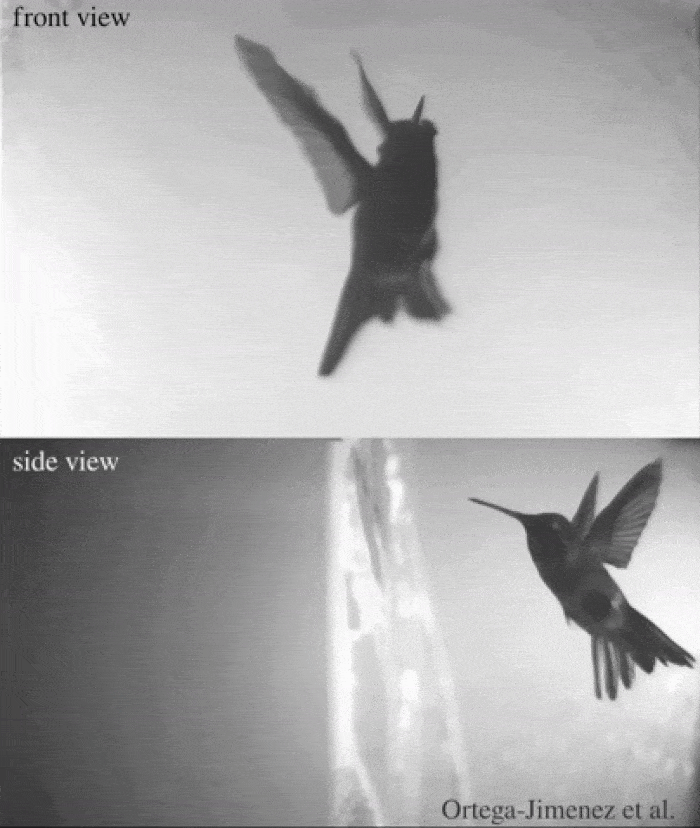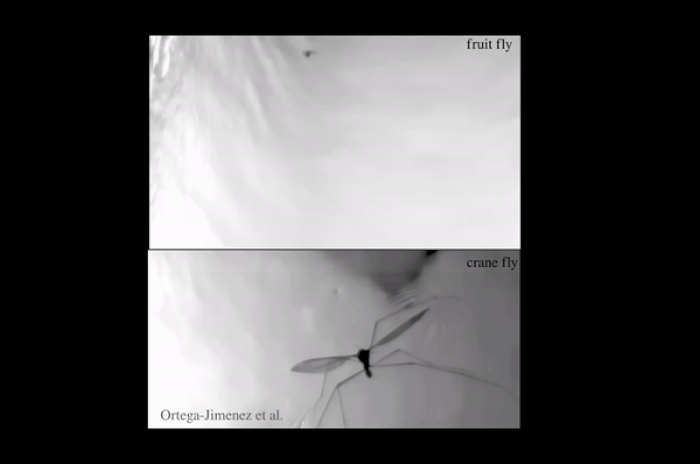For all the little creatures out there, falling water can be a big hazard. When water drops are a large percentage of your body size, you need clever adaptations to survive even commonly occurring phenomena such as rain. So even greater volumes of falling water, like a waterfall, may as well be a wall to delicate fliers.
But for some insects and small birds, this seemingly impenetrable barrier is surmountable. Several species of birds at least, make use of these natural barriers by tucking their nests safely behind the shimmering walls. Some are known to fly right through this plummeting liquid.
To get a better idea of how this works, researchers filmed hummingbirds passing through falling water. And were surprised at the clever and elegant way they tackle this obstacle.
As we can see below, most of the Anna's hummingbirds (Calypte anna) in the experiment pushed through the water side on - using a leading wing to pierce the wet veil.
"Nothing in the literature could predict that," lead researcher, biologist Victor Ortega-Jimenez from Kennesaw State University, told Science.
 (Victor Ortega-Jimenez et al, R. Soc. Open Sci., 2020)
(Victor Ortega-Jimenez et al, R. Soc. Open Sci., 2020)
Hummingbirds fly through heavy winds and rain, and have been observed bathing within pools at waterfall bases, so these slight birds (measuring only up to 4.5 grams in weight) do naturally encounter waterfalls.
They are also related to swifts, birds known to nest behind such tumbling rivers.
Researchers expected to see them take on the water head first with wings tucked to minimise their surface area as much as possible, like birds do when they dive.
But while one of the four hummingbirds did lead with its beak, most of these petite and pretty aeronauts positioned themselves so that only one wing pierces the water, sweeping open a window through it, while the other wing remained free to generate thrust.
This allowed them to break through the water veil in less than 100 milliseconds.
To capture the footage, Ortega-Jimenez and colleagues set up an artificial water curtain and trained hummingbirds to use feeders, which they then placed on the other side of the water to the birds.
They also put some flying insects to the test, using light to lure them through the water curtain. Many of the insects did not fare well.
 (Victor Ortega-Jimenez et al, R. Soc. Open Sci., 2020)
(Victor Ortega-Jimenez et al, R. Soc. Open Sci., 2020)
While some flies were able to pierce the surface tension, overcome the downward inertia imposed by the moving water and resist the impacts of water drops to make it through to the other side, fruit (Drosophila melanogaster) and crane (Tipula sp.) flies all succumbed to the forces of the flowing, gravity-obeying liquid.
The house flies (Musca domestica) that made it, had to fly at least 1.6 m/s (5.2 fps) to break through. Some of these then failed to recover their flight and continued to descend after their watery encounter, but a few resumed their path relatively unscathed.
The researchers also tested the properties needed to overcome their waterfall by flinging different sized balls through their water wall at different speeds.
Natural waterfalls are more complicated, of course, but the basic principles would still be the same.
They concluded that animals larger than a hummingbird are able to achieve this using their momentum, whereas those that are smaller need to rely more on greater speeds.
"Waterfalls can thus represent impenetrable physical barriers for small and slow animal fliers", the researchers wrote, speculating that some birds may be taking advantage of waterfalls to protect themselves from both predators (by hiding) and parasites that are unable to pass the water wall.
They suggest comparing parasitic loads between nestlings to confirm this, and the team plans to study the waterfall nesting swifts using drones.
This research was published in Royal Society Open Science.
#Nature | https://sciencespies.com/nature/scientists-film-hummingbirds-flying-through-waterfalls-and-its-beautiful-and-genius/
No comments:
Post a Comment